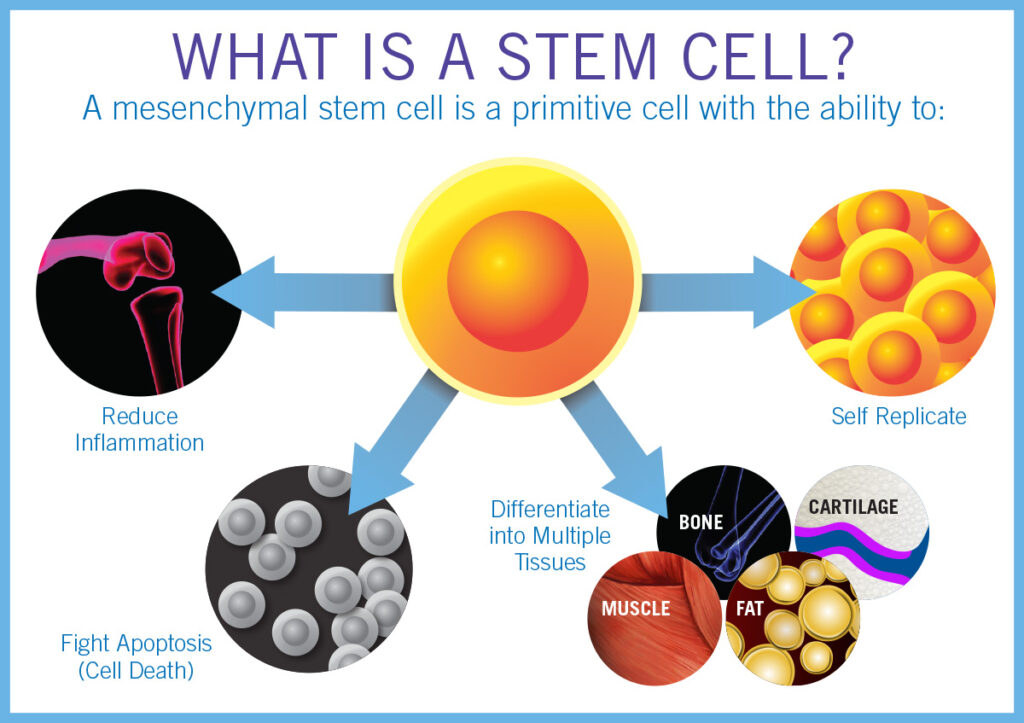Stem cell therapies have great potential in regenerative medicine. Stem cells are versatile, as they can differentiate into many specialized cell types and hence can be used to treat different ailments and injuries. Further studies are still being conducted to reveal ways in which stem cells can be used to repair damaged tissues and organs. This article will present five promising stem cell therapies that will likely revolutionize healthcare soon.
Mesenchymal Stem Cells (MSCs) for Joint Repair
MSCs are found in various tissues, including bone marrow, and they can differentiate into bone, cartilage, and muscle cells. This type of stem cell therapy is well suited for repairing tissues that join muscles and tendons or any other connective tissue. MSCs are today under research to determine whether they can be useful in the treatment of osteoarthritis. They can mend cartilage in joints that have been affected by an injury or years of wear and tear. Initial studies appear very promising, with MSC injections improving pain, inflammation, and function. In the future, MSCs may offer a way to avoid or delay future joint replacement surgeries if clinical trials demonstrate their safety and efficacy. They are also researching the ability of MSCs to treat broken bones, torn tendons, and to repair injuries to connective tissues.
Hematopoietic Stem Cell Transplantation (HSCT) for Blood Disorders
The hematopoietic stem cells are capable of generating blood and immune cells. HSCT or hematopoietic stem cell transplantation involves the introduction of healthy stem cells in the body of those with blood cancer or conditions affecting their blood cells. First, the hematopoietic stem cells are collected from the patient or a matched donor. Then, the patient receives chemotherapy to eliminate his/her existing stem cells. Then, the stem cells that are grown in the lab are reintroduced back into the patient’s body, where they get reprogrammed and start producing healthy blood cells. HSCT can cure or achieve a long-term disease-free state from fatal blood disorders such as leukemia, lymphoma, and complicated immunodeficiencies. New medicines like selective immune suppression drugs are also increasing the safety of HSCT with fewer chances of rejection and complications.
Personalized Medicine with Induced Pluripotent Stem Cells (iPSCs)
Induced pluripotent stem cells (iPSCs) are developed by procedures where adult cells from a person are modified genetically to act like embryonic stem cells. This makes them capable of turning into any cell type. It is fascinating that through iPSCs, it is possible to grow stem cells that are immune compatible with any individual, using skin or blood samples. This is different from normal stem cell transplants, which can be rejected by the body. Patient-derived iPSCs are already exhibiting some preliminary positive results in treating macular degeneration and diabetes. They may one day be able to deliver customized cell therapies for conditions like Parkinson’s or heart disease. However, more research must be done to ensure the safety of iPSC and to program it accurately to the required tissues.
Neural Stem Cells (NSCs) for Neurological Disorder
Neural stem cells (NSCs) are exclusively capable of producing the cells of the nervous system, meaning neurons, astrocytes, and oligodendrocytes. At the same time, transplanted NSCs can replace damaged or degenerating brain and spinal cord tissue. Scientists believe that in the future, NSC therapies will help to regain lost mobility in case of spinal cord injury, the ability to speak after stroke, or control muscles in one’s hands in neurodegenerative diseases like Parkinson’s disease. A few human trials are also currently being conducted. Nevertheless, some problems must be solved, such as NSC survival, their incorporation, and direct differentiation towards the injured parts of the individual.
Cardiac Stem Cells (CSCs) for Heart Disease
The heart has only limited capability for regeneration in case it is damaged. Therefore, CSCs present a promising avenue in the treatment of cardiac diseases, including heart attacks or chronic heart failure, by replacing damaged cardiac muscles. CSCs derived from various cell sources have been demonstrated to improve the function of the heart in some animal studies following cardiac events. Phase one human trials are also showing some promise in treating ischemic heart failure by injecting the patient’s own heart stem cells into regions of cardiac injury. However, the specific mechanisms as to how these CSCs improve heart health are not yet conclusively understood. Another difficult aspect is achieving optimal delivery and retention of therapeutic CSCs at the tumor site. However, current emerging therapies such as cardiac stem cells indicate a possibility of reversing irreversible heart damage in the future.
Conclusion
Stem cell therapy is a promising frontier of regenerative medicine that might revolutionize the management of injury, degenerative and genetic diseases. In the context of this article, mesenchymal, hematopoietic, induced pluripotent, neural, and cardiac stem cells show great promise. If more research and clinical trials are pursued, stem cell technology can develop cheaper means of healing or replacing damaged tissues and organs.

